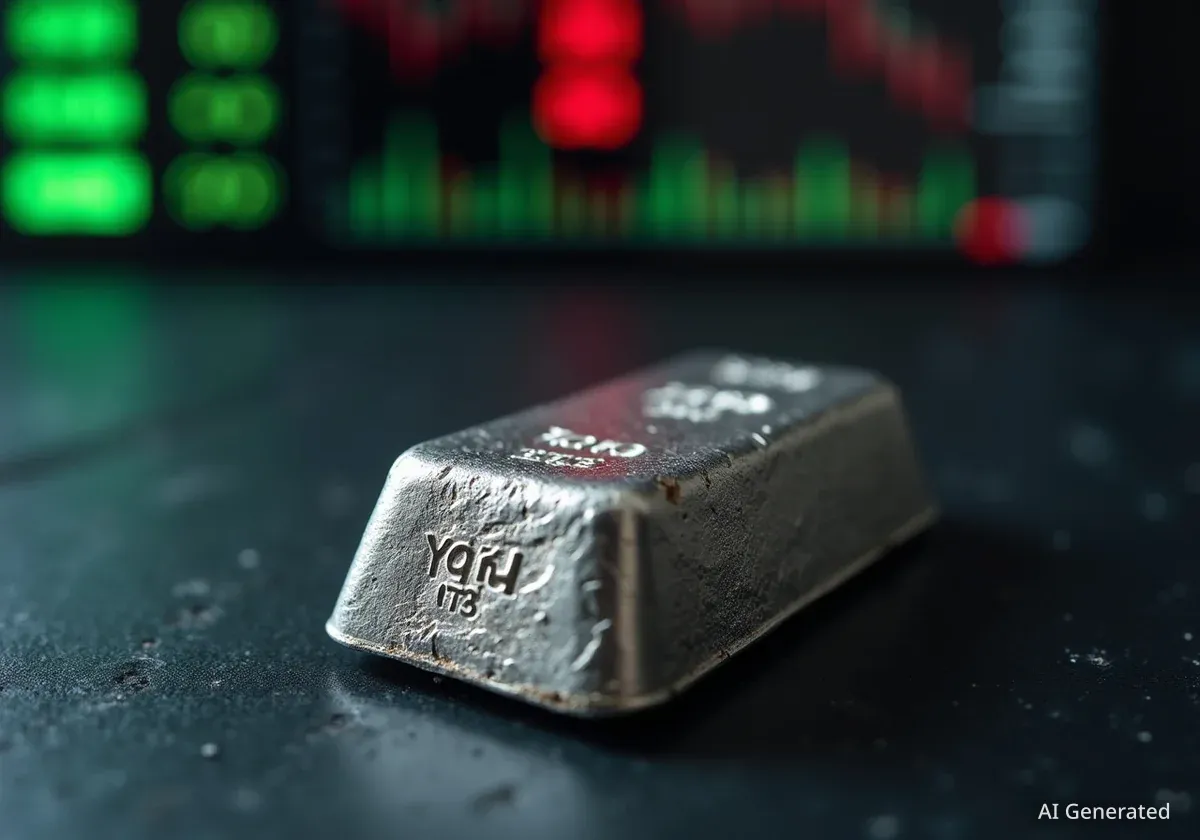The price of silver experienced a notable decline during Friday's Asian trading session, falling approximately 1.20% to settle near $53.65 per ounce. This downturn comes after the precious metal reached a record high of $54.86 in the prior session, with analysts attributing the drop primarily to profit-taking among traders.
Despite the short-term correction, market experts suggest that several underlying factors could limit further declines. These include persistent safe-haven demand driven by geopolitical tensions and expectations of interest rate cuts by the U.S. Federal Reserve, which tend to support non-yielding assets like silver.
Key Takeaways
- Silver's price fell to approximately $53.65, marking a 1.20% decrease for the day.
- The decline is largely seen as a result of traders securing profits after the metal hit a historic peak of $54.86.
- Analysts anticipate a period of market normalization as seasonal demand, particularly following the Diwali festival, subsides.
- Support for silver prices is expected from ongoing geopolitical risks and the prospect of lower U.S. interest rates.
- Market sentiment strongly indicates a forthcoming rate cut from the Federal Reserve, which could reduce the opportunity cost of holding silver.
Profit-Taking Follows Historic Peak
The recent surge in silver prices to a record high created a prime opportunity for investors to capitalize on their gains. This activity, known as profit-taking, is a common market behavior where traders sell an asset after a significant price increase to lock in profits, leading to a temporary price correction.
Market analysts had anticipated this pullback. The period following major cultural festivals like Diwali often sees a reduction in physical demand for precious metals, contributing to a normalization of prices.
Post-Festive Season Adjustment
Seasonal demand plays a significant role in precious metal markets. In regions like India, festivals such as Diwali are a major driver for gold and silver purchases. Once this period of heightened buying concludes, a natural tapering of demand often occurs, allowing prices to stabilize or correct.
Renisha Chainani, head of research at Augmont, a platform for gold and silver investments, commented on this expected shift. She noted that the volatility seen during the festive season is likely to decrease.
"Post-Diwali, we might see the market normalizing as arbitrage returns and premiums compress. I expect this to start from next week onwards," Chainani explained.
Economic Headwinds Provide Price Support
While profit-taking has applied downward pressure, several global economic and political factors are providing a floor for silver prices. The metal's status as a safe-haven asset means investors often turn to it during times of uncertainty.
Ongoing trade disputes between the United States and China continue to create concerns about long-term economic stability. U.S. Treasury Secretary Scott Bessent has suggested a potential for a longer truce before tariffs are increased further, but the underlying tensions remain a source of market anxiety.
Additionally, geopolitical risks in various parts of the world and the possibility of a U.S. government shutdown could further boost demand for assets perceived as safe stores of value, including silver.
Federal Reserve Policy Impact
According to market data from Reuters, traders are currently pricing in a 98% probability of a 25-basis-point interest rate cut by the Federal Reserve in October. Another rate reduction is fully priced in for December.
Federal Reserve's Stance on Interest Rates
The outlook for U.S. monetary policy is a critical factor influencing silver's value. Federal Reserve Chair Jerome Powell recently signaled that the central bank is likely to implement another quarter-point rate reduction this month.
Lower interest rates are generally beneficial for precious metals. They decrease the opportunity cost of holding non-yielding assets like silver, making it a more attractive investment compared to interest-bearing instruments such as bonds.
As the market has already factored in a high likelihood of rate cuts, this expectation continues to provide strong underlying support for silver, potentially cushioning it from more significant price drops.
Understanding Silver's Role in the Market
Silver's price is influenced by a complex interplay of investment demand, industrial use, and macroeconomic factors. Understanding these drivers is key to forecasting its future performance.
Investment and Safe-Haven Demand
Like gold, silver is considered a store of value. Investors often purchase it to diversify their portfolios or as a hedge against inflation and currency devaluation. During periods of economic or political instability, demand for physical silver and silver-backed financial products often increases.
Industrial Applications
Unlike gold, silver has extensive industrial applications, which account for a significant portion of its annual demand. Key uses include:
- Electronics: Silver has the highest electrical conductivity of any metal, making it essential for components in smartphones, computers, and other devices.
- Solar Energy: It is a critical component in the manufacturing of photovoltaic cells for solar panels.
- Automotive: The metal is used in various electrical components in modern vehicles.
Therefore, global industrial output, particularly in major economies like the U.S. and China, can have a direct impact on silver prices. A slowdown in manufacturing can reduce demand, while industrial growth can increase it.
Relationship with Gold and the U.S. Dollar
Silver prices often move in tandem with gold, though not always at the same rate. The Gold/Silver ratio, which measures how many ounces of silver are needed to buy one ounce of gold, is a metric watched by traders to gauge relative value.
Furthermore, since silver is priced in U.S. dollars (XAG/USD), the strength of the dollar is a major factor. A weaker U.S. dollar typically makes silver cheaper for buyers using other currencies, which can boost demand and drive prices higher. Conversely, a stronger dollar tends to suppress silver prices.





